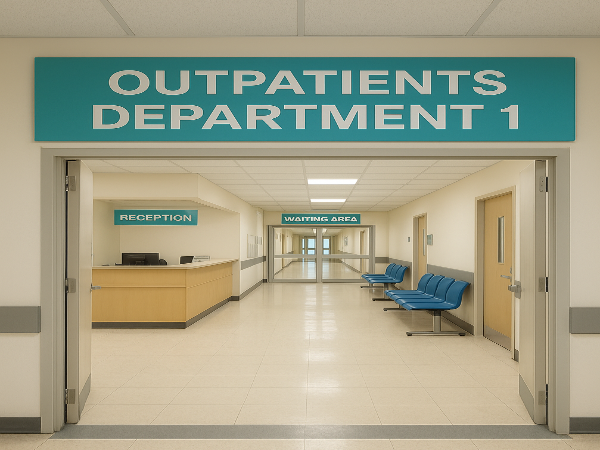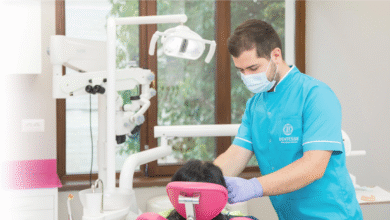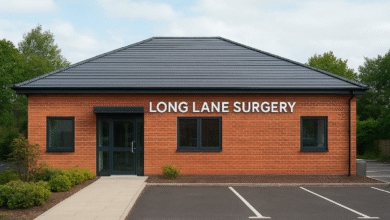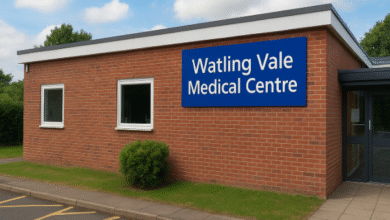Outpatients Department 1: A Comprehensive Guide to Modern Hospital Care
Understanding the Role, Structure, and Benefits of OPD 1 in Today’s Healthcare System

Outpatients Department 1 (OPD 1) is a specialized section within a hospital or medical facility where patients receive medical consultation, diagnosis, and treatment without requiring overnight admission. The “1” typically designates a specific unit or section within outpatient services, often focused on a specialty or group of related healthcare needs. OPD 1 plays a vital role in ensuring accessible, cost-effective, and efficient care, helping hospitals manage patient flow while reducing pressure on inpatient wards.
Introduction
Healthcare systems worldwide are designed to cater to both acute and long-term medical needs. While inpatient services are essential for serious conditions that demand hospital admission, outpatient departments (OPDs) have become equally important in addressing day-to-day healthcare needs. Among these, Outpatients Department 1 (OPD 1) stands out as a designated unit within hospital outpatient services. It typically handles specific specialties, serves as the first point of contact for patients, and ensures timely medical care without the need for admission.
This article explores the concept, structure, and functions of OPD 1, highlighting its significance in modern healthcare delivery.
What is Outpatients Department 1?
Outpatients Department 1 is generally the first or primary outpatient unit within a hospital. It is designed to offer consultations, diagnostic services, follow-up appointments, and treatments that do not require overnight stays. The “1” serves as a label to distinguish this unit from other OPDs within the hospital (such as OPD 2 for a different specialty).
By streamlining patient care, OPD 1 ensures:
Quick access to medical professionals.
Reduced waiting times for common medical issues.
Effective use of hospital resources.
Prevention of unnecessary admissions.
The Importance of OPD 1 in Healthcare
OPD 1 acts as the frontline of hospital services, where most patients begin their healthcare journey. Its importance can be understood through these roles:
Accessibility: Patients can see a doctor without the burden of overnight stays.
Cost-Effectiveness: Outpatient care reduces the financial strain on patients.
Efficient Resource Utilization: By managing minor cases, OPD 1 frees up inpatient beds for critical conditions.
Continuity of Care: Follow-ups and preventive services are often routed through OPD 1.
Community Engagement: OPD 1 often provides preventive healthcare education, vaccinations, and screenings.
Structure and Layout of OPD 1
A well-organized OPD 1 includes multiple functional areas designed for efficiency, comfort, and smooth patient flow. Common sections include:
Reception and Registration Desk – The first point of contact where patient records and appointments are managed.
Waiting Area – Equipped with seating, signage, and information boards to ensure patient comfort.
Consultation Rooms – Separate rooms for different specialties or doctors.
Diagnostic Services – On-site or nearby labs, imaging, and pathology units for quick results.
Pharmacy – To provide prescribed medicines immediately after consultation.
Treatment Rooms – For minor surgical or emergency procedures.
Support Facilities – Toilets, water stations, and areas for elderly or disabled patients.
Key Functions of OPD 1
Medical Consultations
Patients visit OPD 1 for initial medical advice, ongoing treatment, or follow-up care after hospital discharge.
Diagnosis and Screening
Blood tests, X-rays, and other diagnostic services are often conducted through OPD 1 to identify health problems quickly.
Preventive Care
Health education, vaccinations, and screenings for common diseases are vital functions of OPD 1.
Referral Services
If a patient’s condition requires admission, OPD 1 ensures smooth referral to inpatient wards.
Follow-Up Care
Patients recovering from surgeries or illnesses often return to OPD 1 for monitoring.
Advantages of OPD 1
Reduced Hospital Burden: Eases pressure on emergency and inpatient departments.
Affordable Care: Outpatient treatment costs significantly less than admission.
Early Diagnosis: Helps detect health issues before they become severe.
Patient Convenience: No need for overnight stays; patients can return home the same day.
Specialized Units: Focused care, such as cardiology or dermatology, ensures expert treatment.
Challenges Faced by OPD 1
Despite its benefits, OPD 1 also faces challenges:
Overcrowding: High patient volume can lead to long waiting times.
Resource Constraints: Limited staff or equipment may hinder service quality.
Administrative Delays: Inefficient registration or billing systems create bottlenecks.
Infection Risks: Crowded OPDs may expose patients to communicable diseases.
Patient Dissatisfaction: Long waits or rushed consultations can reduce trust in services.
Improving the Efficiency of OPD 1
To enhance the patient experience and operational efficiency, hospitals can adopt several strategies:
Digital Appointment Systems: Online booking and scheduling reduce waiting times.
Electronic Medical Records (EMRs): Ensure quick access to patient history.
Triage Systems: Prioritize cases based on urgency.
Staff Training: Improves communication and service delivery.
Infrastructure Upgrades: Comfortable seating, signage, and ventilation improve patient comfort.
Feedback Mechanisms: Patient surveys help identify areas for improvement.
Role of Technology in OPD 1
Modern healthcare increasingly relies on technology, and OPD 1 is no exception. Some technological innovations include:
Telemedicine Integration: Remote consultations expand access beyond hospital walls.
Digital Displays: Real-time updates on waiting times.
Automated Queuing Systems: Ensures fairness and reduces patient stress.
Mobile Apps: Allow patients to check schedules, reports, and prescriptions.
AI-Based Diagnostics: Assist doctors in faster and more accurate diagnoses.
OPD 1 and Community Health
Beyond individual patient care, OPD 1 contributes to public health through:
-
Immunization Drives
-
Awareness Campaigns on Lifestyle Diseases
-
Screening Programs for Diabetes, Hypertension, and Cancer
-
Mental Health Counseling
-
Nutrition and Wellness Guidance
This makes OPD 1 a hub not only for treatment but also for prevention and health promotion.
Case Examples of OPD 1
General Medicine OPD 1
Hospitals often assign OPD 1 to general medicine, serving as the first stop for common illnesses like fever, infections, or chronic disease follow-ups.
Pediatric OPD 1
Some hospitals dedicate OPD 1 to children’s health, offering vaccinations, growth monitoring, and specialized pediatric consultations.
Specialty OPD 1
In large medical institutions, OPD 1 may focus on a specialty such as cardiology, dermatology, or orthopedics, providing expert-level care.
Future of OPD 1
As healthcare evolves, OPD 1 is expected to:
Adopt smart hospital technologies for seamless care.
Expand telemedicine services for remote patients.
Offer integrated care models, linking outpatient and inpatient data.
Focus more on preventive healthcare, tackling lifestyle diseases.
Emphasize patient-centered design, with digital tools enhancing experience.
Conclusion
Outpatients Department 1 (OPD 1) is much more than just a hospital unit—it is the cornerstone of accessible, cost-effective, and preventive healthcare. By serving as the first point of contact, offering diagnosis, treatment, and follow-up care, OPD 1 reduces the burden on inpatient facilities while ensuring patients receive timely medical attention.
As technology and healthcare practices advance, OPD 1 will continue to evolve, delivering better patient experiences and contributing significantly to community health.



